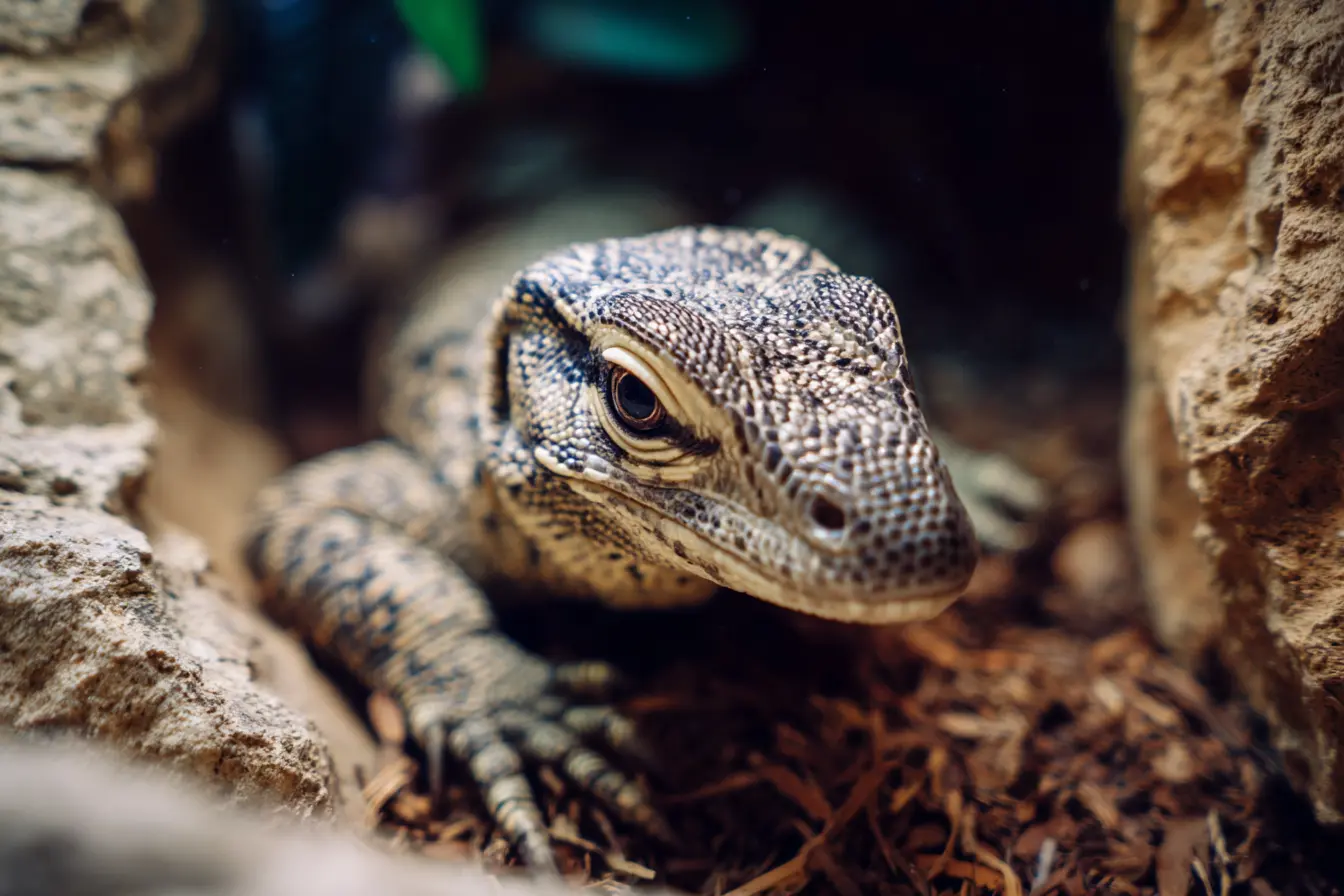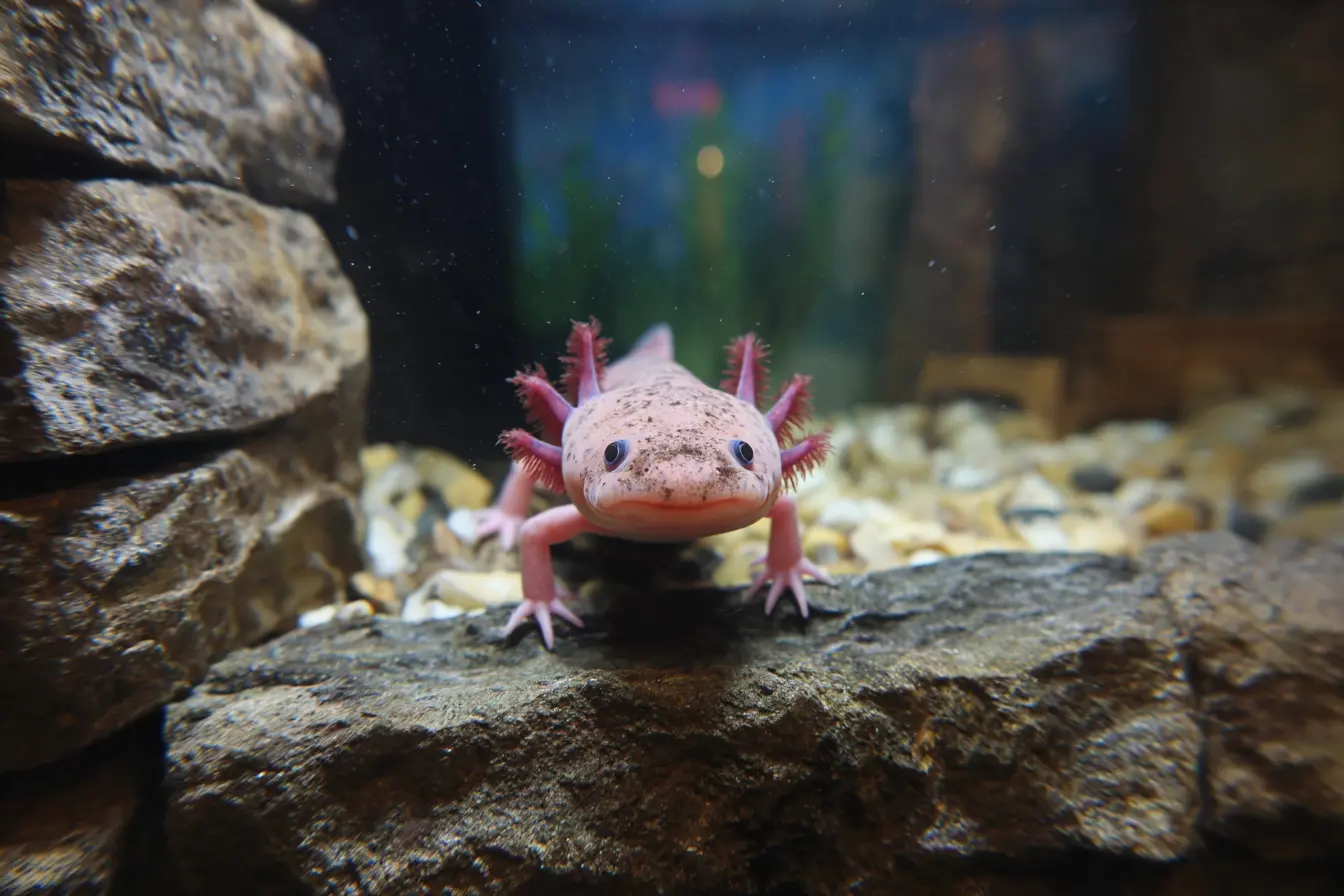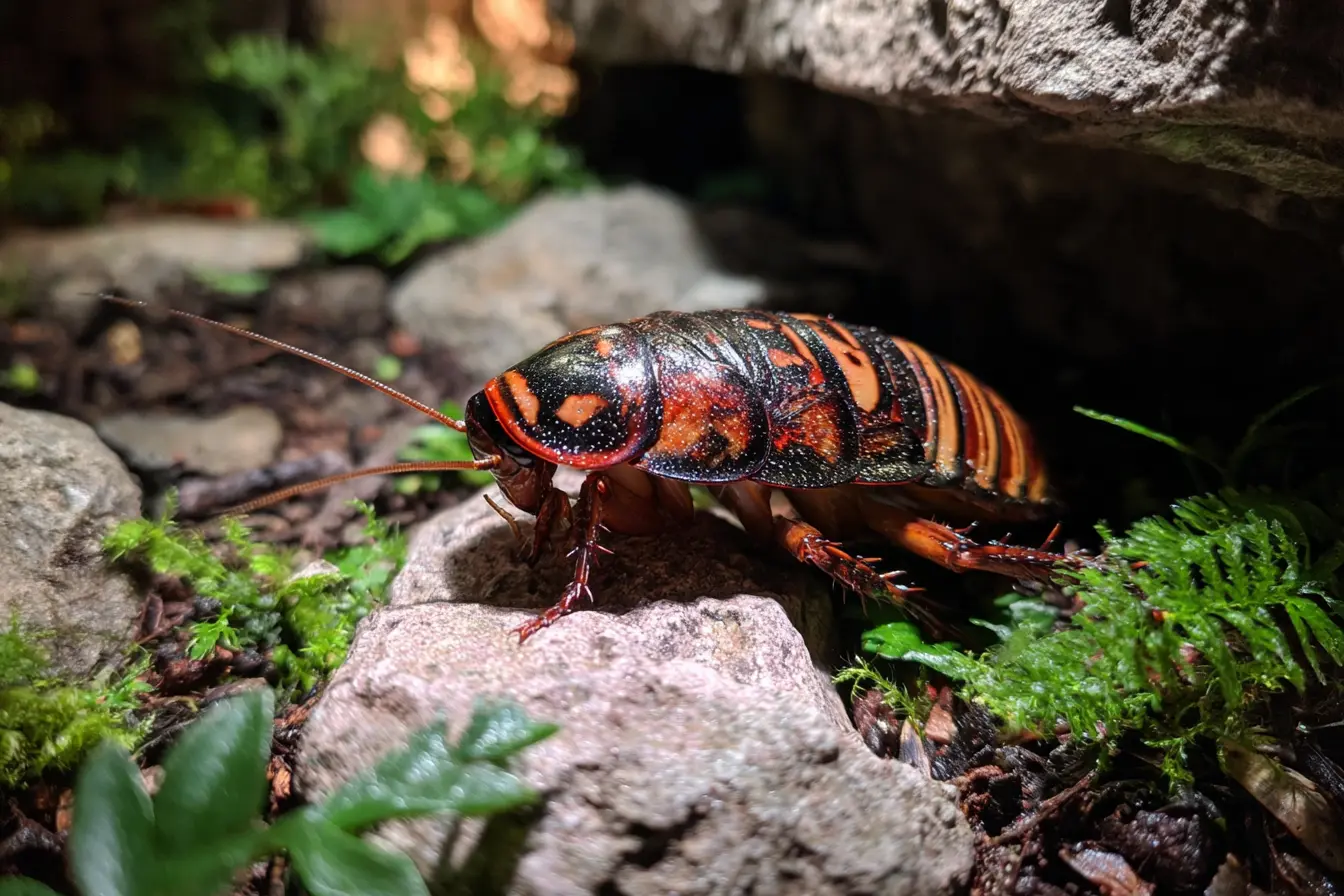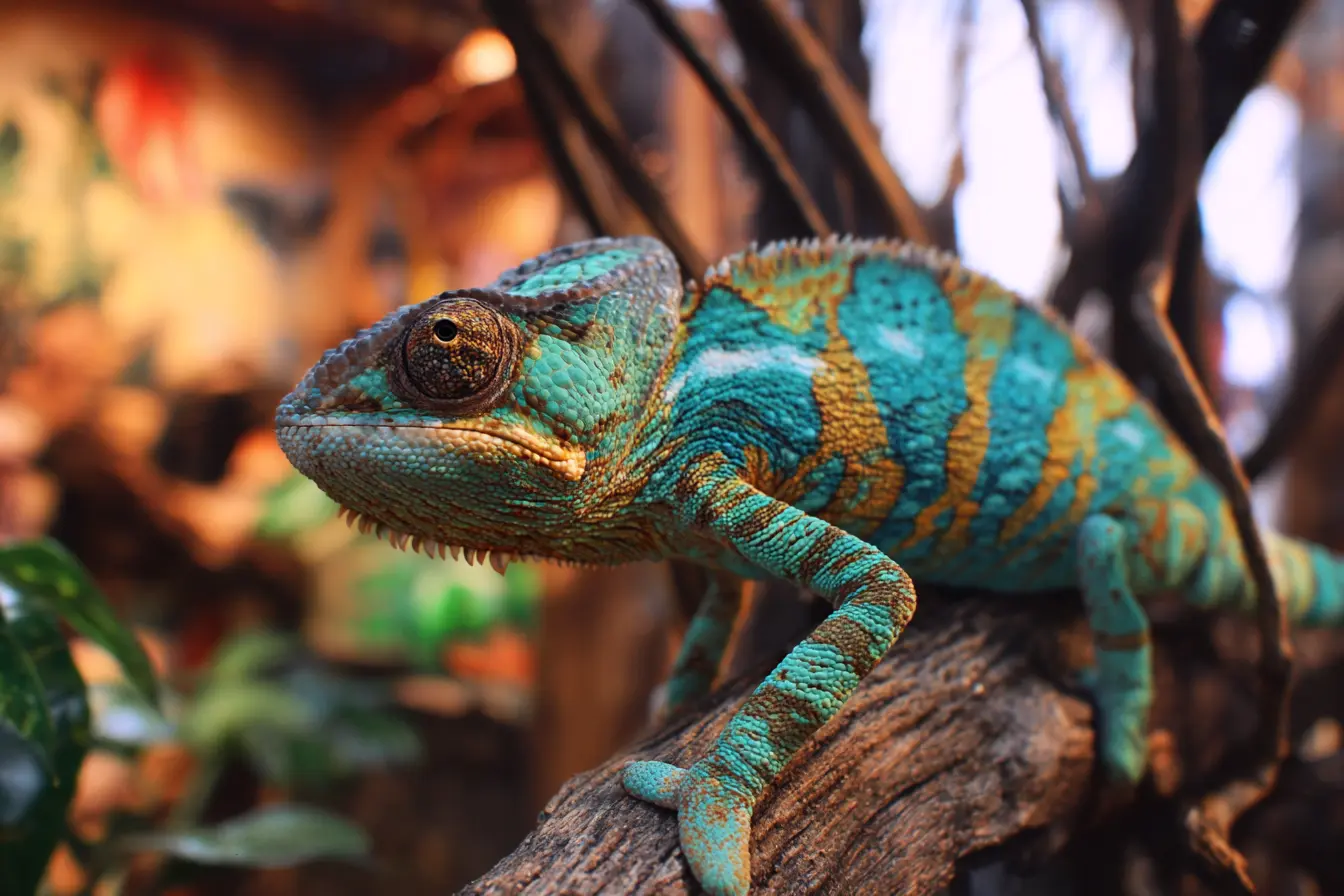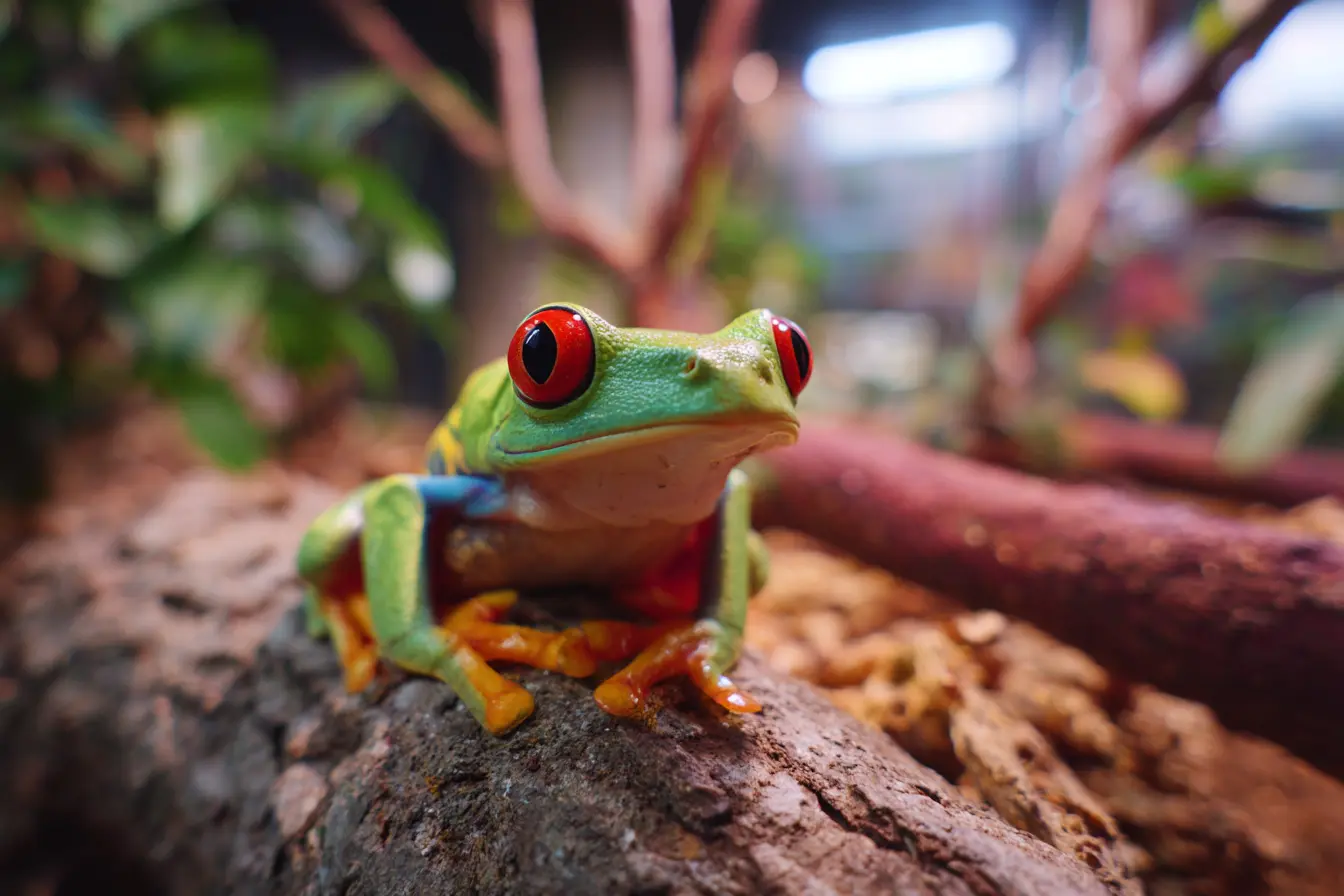
The Complete Guide to Caring for a Red-Eyed Tree Frog
If you're thinking about adding a red-eyed tree frog (Agalychnis callidryas) to your collection, you're in for a treat. These iconic amphibians are best known for their vibrant green bodies, blue and yellow flanks, and unmistakable red eyes. Native to Central America, they’ve become a popular choice among exotic pet keepers due to their striking appearance and relatively manageable care needs.
This guide will walk you through everything you need to know to successfully care for your red-eyed tree frog.
Introduction to the Red-Eyed Tree Frog
Red-eyed tree frogs are native to the rainforests of Central America, including parts of Mexico, Honduras, Nicaragua, and Costa Rica. In the wild, they spend most of their time in the treetops and come out at night to hunt.
These frogs are arboreal, nocturnal, and sensitive to changes in their environment. In captivity, they can live for 5–10 years with proper care, making them a medium- to long-term commitment.
Is a Red-Eyed Tree Frog the Right Pet for You?
Before bringing one home, consider the following:
- They require a vertically oriented, humid environment with live plants and climbing surfaces
- They are nocturnal and may be inactive during the day
- They should not be handled frequently, as their skin is delicate and absorbs chemicals
- They thrive in groups but require careful monitoring of their environment
If you’re happy to create a naturalistic, well-maintained setup and enjoy observing rather than handling, they can be a very rewarding species to keep.
Housing Your Red-Eyed Tree Frog
Enclosure Size and Orientation
A vertical terrarium is essential, as these frogs love to climb. A glass tank measuring 45 x 45 x 60 cm (18 x 18 x 24 inches) is ideal for a pair or trio.
Key Features
- Secure lid – They are escape artists and strong jumpers
- Vertical space – Provide branches, vines, and leaves at different heights
- Humidity – Keep humidity between 70% and 90%. Use a hygrometer and mist regularly
- Ventilation – Ensure there’s airflow to prevent mould growth
- Background and decor – Cork bark, live or artificial plants, and hiding spots help mimic their natural habitat
Substrate
Use moisture-retaining substrates like:
- Coconut fibre
- Sphagnum moss
- ABG mix (for bioactive setups)
Avoid gravel or bark chips that could cause impaction if swallowed.
Lighting and Temperature
Red-eyed tree frogs need a day-night cycle and stable temperatures:
- Daytime temperature: 24–28°C (75–82°F)
- Night-time temperature: 21–24°C (70–75°F)
- UVB lighting: Optional but beneficial in low levels (2.0–5.0 UVB bulb) for vitamin D3 synthesis and overall health
- Lighting cycle: 12 hours on, 12 hours off
A heat mat or ceramic bulb can help maintain night-time temperatures in cooler homes.
Water and Humidity
Humidity is critical for red-eyed tree frogs:
- Mist 1–2 times daily with dechlorinated or RO water
- Provide a shallow water dish for bathing and soaking – clean it daily
- Maintain ambient humidity around 80%, especially at night
Feeding Your Red-Eyed Tree Frog
These frogs are insectivores and require a varied diet of live prey.
Suitable Foods
- Crickets (gut-loaded)
- Dubia roaches
- Calciworms
- Small locusts
- Flightless fruit flies (for juveniles)
- Waxworms (treat only – high in fat)
Dust food with supplements:
- Calcium with D3 – 2 times per week
- Multivitamins – once per week
Feed adults every 2–3 days; juveniles may need daily feeding.
Handling and Interaction
Red-eyed tree frogs should not be handled unless absolutely necessary. Their skin is permeable and easily absorbs harmful substances, including soaps, lotions, and even tap water.
If handling is required:
- Wash hands thoroughly and rinse with dechlorinated water, or
- Wear powder-free gloves
- Limit handling time and support their body gently
They are best enjoyed as a display species, especially in a well-planted, naturalistic setup.
Health and Common Issues
Red-eyed tree frogs are fairly hardy but are sensitive to environmental problems.
Common Health Concerns
- Skin infections – Caused by low humidity or poor hygiene
- Parasites – More common in wild-caught frogs; get captive-bred when possible
- Stress – Overhandling, incorrect lighting, or enclosure placement can cause lethargy or loss of appetite
- Nutritional deficiencies – Prevent by supplementing food and offering variety
Signs of Illness
- Lethargy during active hours
- Loss of appetite
- Excessive skin shedding
- Discoloured or bumpy skin
- Difficulty climbing
Consult an exotic vet with amphibian experience if any symptoms arise.
Breeding Red-Eyed Tree Frogs
Breeding is possible but requires precise environmental cues:
- Simulate the rainy season with cooler temperatures and heavy misting
- Males call to females with a series of chirps
- Females lay eggs on leaves overhanging water
- Tadpoles drop into the water when hatched and require a separate rearing tank
Breeding should only be attempted by experienced keepers prepared to care for large numbers of tadpoles and froglets.
Where to Get a Red-Eyed Tree Frog
Always buy from a reputable breeder or exotic pet specialist. Avoid wild-caught specimens, as they are more prone to disease, stress, and poor adjustment to captivity.
Look for:
- Bright, alert behaviour
- Clear eyes and firm body condition
- No skin lesions or signs of dehydration
- Active response to movement
Ask about captive-breeding origins, and if possible, request lineage or health history.
Final Thoughts
Red-eyed tree frogs are visually stunning and rewarding amphibians to keep, but they do require a commitment to maintaining proper environmental conditions. They are ideal for keepers who enjoy setting up lush, tropical terrariums and watching nocturnal activity.
With proper care, your red-eyed tree frog can thrive for up to a decade, providing a beautiful glimpse into the rainforest right in your home.
Contents
- Introduction to the Red-Eyed Tree Frog
- Is a Red-Eyed Tree Frog the Right Pet for You?
- Housing Your Red-Eyed Tree Frog
- Lighting and Temperature
- Water and Humidity
- Feeding Your Red-Eyed Tree Frog
- Handling and Interaction
- Health and Common Issues
- Breeding Red-Eyed Tree Frogs
- Where to Get a Red-Eyed Tree Frog
- Final Thoughts
Tags
Vets near you
Speciality vets
- Aquatics vet specialists
- Birds vet specialists
- Camelids vet specialists
- Cats vet specialists
- Cattle vet specialists
- Deer vet specialists
- Dogs vet specialists
- Equines vet specialists
- Exotic vet specialists
- Goats vet specialists
- Pigs vet specialists
- Poultry vet specialists
- Sheep vet specialists
- Small Mammals vet specialists
- Wild vet specialists
